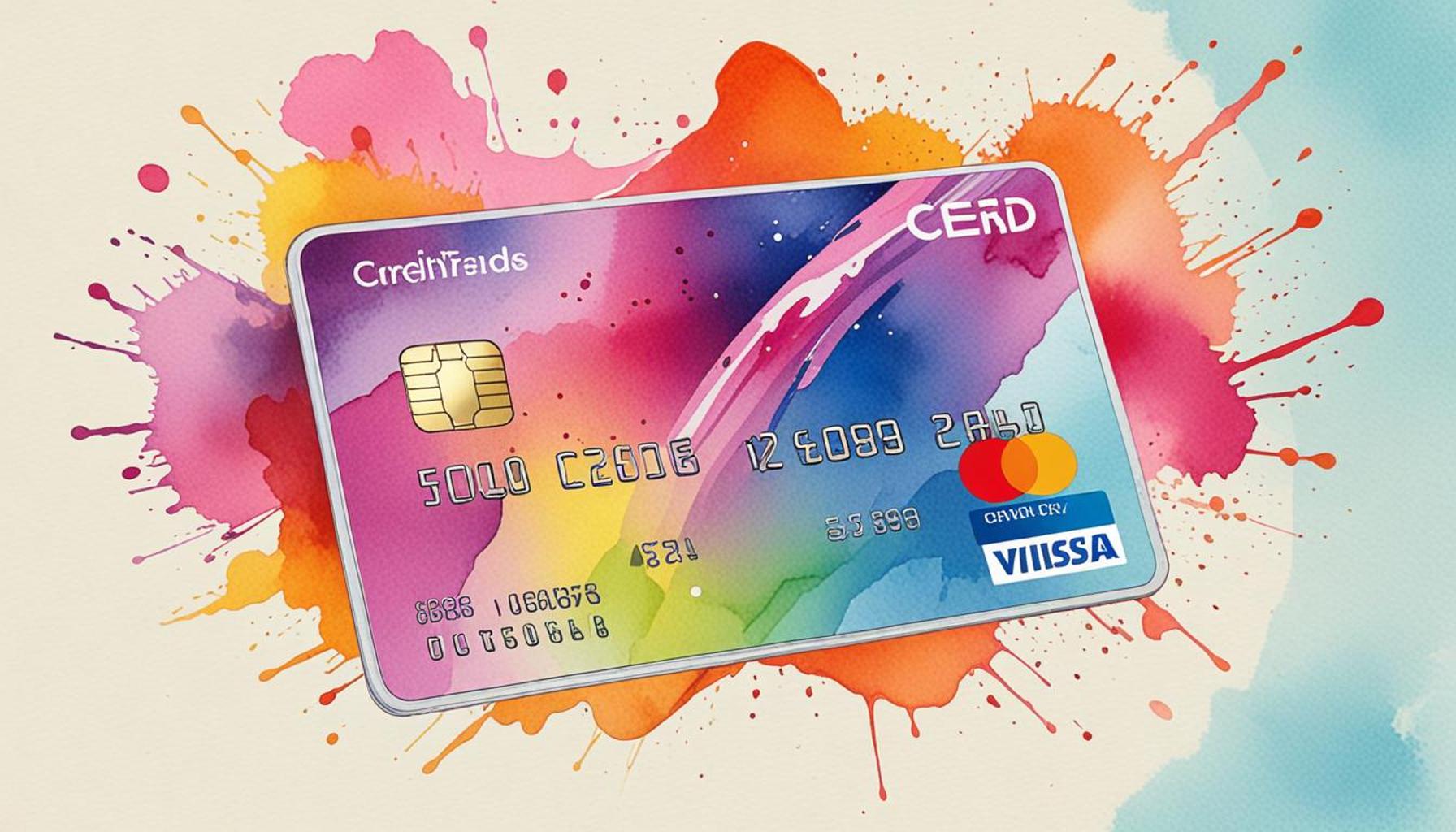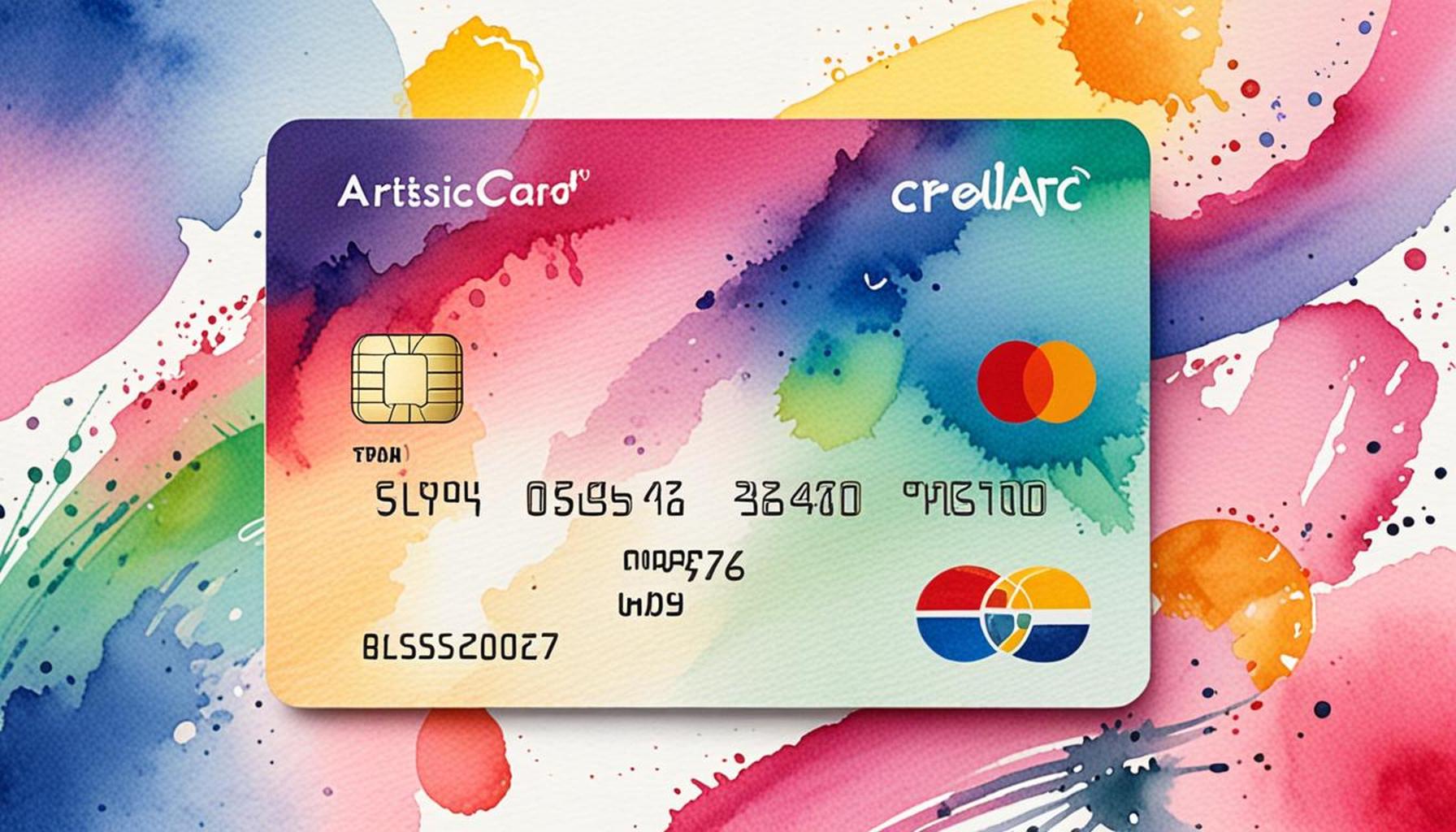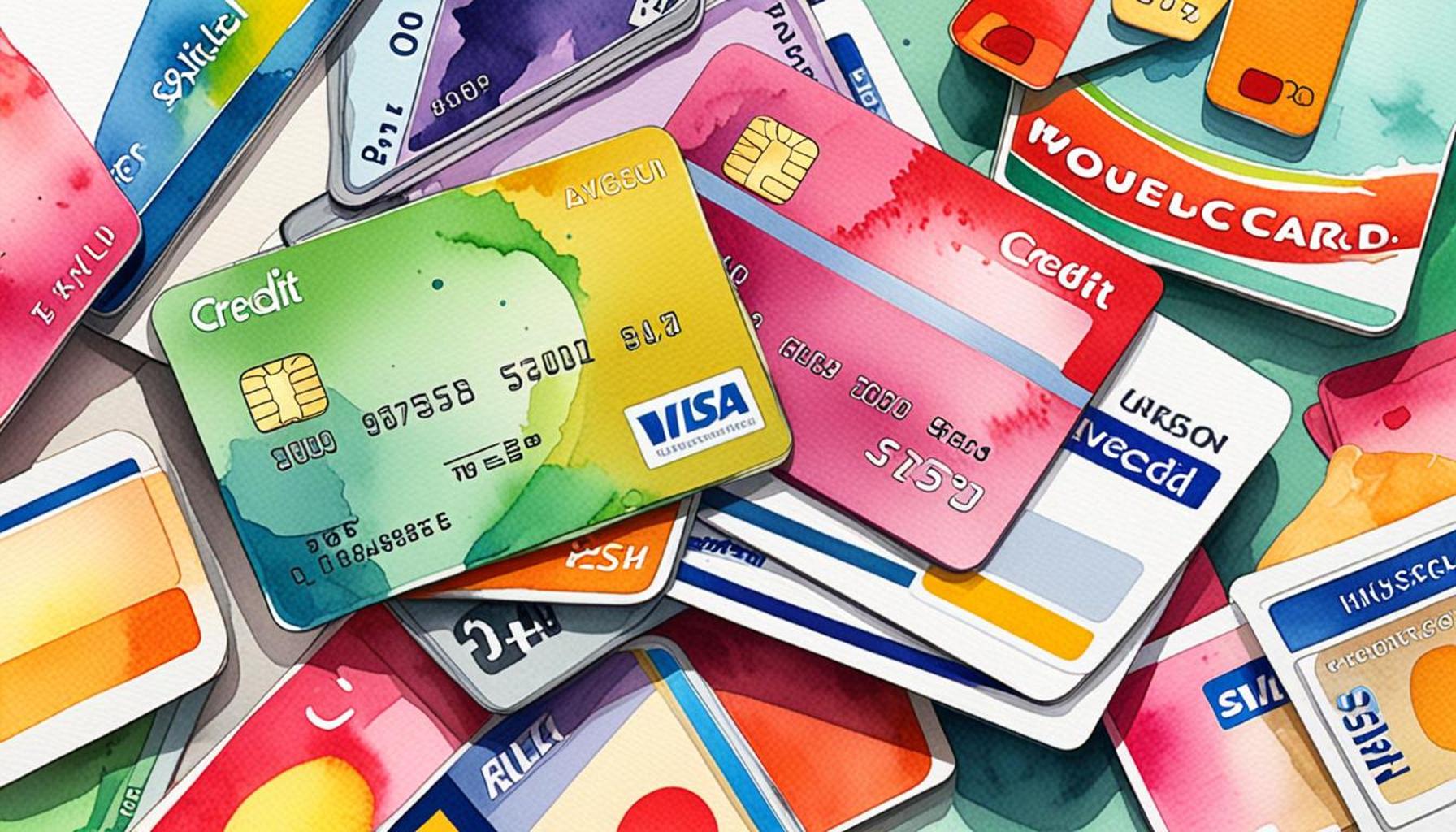Future Trends in the Credit Card Market and Their Implications for Consumers

The Changing Landscape of Credit Cards
The credit card market is a dynamic and rapidly evolving space, where innovative technologies and shifting consumer expectations are reshaping how we view and use credit. Staying informed about these emerging trends is not merely beneficial; it is essential for making informed financial decisions that can positively impact our lives. With the right knowledge, consumers can navigate this landscape, unlocking new opportunities while mitigating potential challenges.
One of the most significant trends currently revolutionizing the credit card industry is Contactless Payments. These cards, equipped with tap-and-go technology, allow consumers to make purchases swiftly and efficiently. Imagine entering a coffee shop, grabbing your favorite brew, and simply tapping your card on the reader without needing to fumble for cash or enter a PIN. This method not only saves time but also creates a streamlined shopping experience. As of 2023, approximately 40% of credit card transactions in the United States are made using contactless technology, showcasing its staggering growth and popularity among consumers seeking convenience.
As the world becomes increasingly digital, Enhanced Security has surged to the forefront of consumer concerns. Innovations such as biometric authentication—like fingerprint scanning and facial recognition—are transforming how we identify ourselves when making purchases. This move toward personalized security measures ensures that the individual carrying the credit card is indeed the authorized user. A recent study revealed that credit card fraud losses reached over $16 billion in the U.S. in 2020, highlighting the need for better protection methods. With these advancements, consumers can relish in peace of mind knowing their finances are safeguarded.
Moreover, the concept of Personalization is changing the credit card game. Lenders are utilizing advanced algorithms and data analysis to curate offers and rewards that align closely with individual spending patterns. For instance, a traveler may receive enhanced rewards for airline purchases, while a gourmet food lover may benefit from cashback on dining expenses. This tailored approach not only enhances user satisfaction but also encourages responsible spending aligned with personal preferences and financial goals.
In a rather unconventional yet exciting twist, the rise of Cryptocurrency Integration into credit cards is gaining momentum. Some forward-thinking financial institutions are now allowing users to transact using digital currencies like Bitcoin and Ethereum. This integration allows a seamless blend of traditional finance and the burgeoning world of cryptocurrency, attracting tech-savvy consumers eager to explore this new financial frontier.
As we contemplate these trends, we recognize that credit cards are not merely tools for transactions; they can be powerful allies in building savings, enhancing credit scores, and offering financial flexibility. By understanding and embracing these innovations, consumers empower themselves to make more conscious choices, promoting healthier financial habits.
Ultimately, the landscape of credit cards is changing—the future is brighter, smarter, and more personalized. Let us step into this new era with curiosity and responsibility, leveraging these trends to enhance our financial health and security.
DIVE DEEPER: Click here to discover how to apply
Innovations Shaping Consumer Experience
As we delve deeper into the future of the credit card market, it’s essential to recognize how innovations are improving not only the functionality of credit cards but also the overall consumer experience. These advancements are designed to foster greater financial control and satisfaction among users, ultimately transforming the relationship individuals have with credit. Imagine stepping into a world where every swipe not only fulfills your purchasing need but also elevates your financial journey. Here are some key innovations to consider:
- Smart Card Technology: The advent of smart cards equipped with microchips and advanced communication features enables users to manage their financial transactions more effectively. These cards can store multiple accounts, allowing consumers to switch between balances without carrying multiple cards. This innovation promotes not just convenience but also budget management, helping users keep track of their spending.
- Integrated Budgeting Tools: Many modern credit cards are now offering integrated budgeting and spending analysis tools that help users monitor their financial health right from their banking apps. These features can track spending categories, set limits, and send alerts when nearing predefined thresholds, allowing consumers to take charge of their finances and make informed decisions.
- Loyalty and Rewards Programs: With consumer engagement in mind, credit card companies are enhancing loyalty programs to offer enticing rewards tailored to individual spending behaviors. Whether it’s earning points for every dollar spent on travel, groceries, or gas, these personalized rewards can incentivize responsible credit use, encouraging consumers to cultivate disciplined financial habits.
- AI-Powered Customer Support: The integration of artificial intelligence into customer service is making it easier for consumers to seek assistance and resolve issues quickly. Virtual assistants trained to handle inquiries can provide instant responses, thus enhancing the customer experience and ensuring that users feel supported and valued.
Each of these innovations introduces a myriad of possibilities for consumers seeking greater control over their financial destinies. The empowerment that comes from understanding and utilizing these tools effectively propels consumers toward a future where money management is smarter and more straightforward.
Additionally, as competition within the credit card market intensifies, consumers can expect more favorable terms and conditions. Financial institutions are now more motivated than ever to refine their offerings, resulting in enhanced interest rates, lower fees, and increased cash back opportunities. As these trends continue to unfold, consumers are positioned to benefit significantly by diligently researching and selecting credit cards that align with their unique financial goals.
The convergence of technology and finance is leading to a paradigm shift where consumers are no longer passive recipients of credit services but active participants in their financial well-being. By embracing these changes, individuals can cultivate not only a healthier relationship with credit but also set the stage for achieving their long-term financial aspirations, making each transaction count.
DISCOVER MORE: Click here for all the details
The Rise of Flexible Payment Options
In an ever-evolving financial landscape, the credit card market is beginning to embrace the concept of flexibility more than ever before. As consumers seek greater autonomy in managing their finances, credit card companies are responding with innovative payment solutions that cater to a variety of spending habits and lifestyle needs. These trends not only empower individuals but also illuminate pathways to financial stability and well-being. Here are some promising developments in this area:
- Buy Now, Pay Later (BNPL) Services: One of the most significant shifts in the credit card market is the growing popularity of BNPL services. This allows consumers to make purchases and pay for them over a specified period, often without incurring interest. This approach can help consumers manage larger expenses without the burden of immediate repayments, providing a sense of relief during tough financial times. However, it is crucial for users to approach these offerings with caution, ensuring they do not overextend themselves and fall into a cycle of debt.
- Dynamic Payment Plans: Credit card providers are increasingly introducing dynamic payment plans that adjust to users’ financial circumstances. This feature enables consumers to temporarily lower their monthly payments in times of financial strain, making it easier to stay on track without sacrificing their credit health. The ability to customize payment structures fosters a collaborative relationship between the consumer and credit lender, emphasizing understanding and support.
- Installment Payments: Another trend gaining traction is the option to split larger purchases into manageable installments directly through credit cards. This flexibility enables consumers to budget effectively while maintaining access to necessary goods and services. For instances where unexpected expenses arise, such as home repairs or medical bills, having the ability to pay over time can be invaluable in preventing financial stress.
- Cryptocurrency Integration: As digital currencies become more mainstream, certain credit card companies are beginning to integrate cryptocurrency into their offerings. This could allow consumers to earn crypto rewards or even pay with cryptocurrencies directly from their credit cards. As this technology continues to develop, it will open up diverse avenues for consumers, presenting them with new ways to engage with their finances and explore investment opportunities.
The growing emphasis on flexible payment options signifies a shift towards a more consumer-centric approach in the credit card market. As financial institutions prioritize these advancements, individuals have the power to choose payment methods that align with their financial realities and goals, fostering responsible credit use while alleviating pressure during financially challenging periods.
Moreover, the implications of these innovations are profound; imagine a future where financial obligations become manageable, stress of payment deadlines is reduced, and consumers can invest their energy into building their savings, all while navigating through life’s various stages. By understanding and utilizing these flexible payment options effectively, consumers are not just participating in the credit ecosystem; they are actively shaping their financial destinies.
This evolution empowers individuals to make informed decisions, allowing them to establish healthy spending habits while enjoying the benefits of credit. As the credit card market continues to adapt to consumer needs, the opportunity for responsible credit usage will flourish—transforming challenges into victories as consumers take charge of their financial lives with confidence and clarity.
DISCOVER MORE: Click here for a step-by-step guide
Looking Ahead: Navigating the Credit Card Landscape
As we delve into the future of the credit card market, it is clear that the evolving landscape will profoundly impact consumers in ways previously unimagined. The momentum towards greater flexibility in payment options, such as Buy Now, Pay Later services, dynamic payment plans, and the integration of cryptocurrency, illustrates a shift towards consumer empowerment. These innovations are not merely about convenience; they are a pathway to fostering responsible financial habits and encouraging financial literacy.
With these developments, consumers have the opportunity to redefine their relationship with credit. By embracing flexible payment solutions, individuals can better manage their finances, transforming potential financial stress into manageable obligations. This trajectory presents an encouraging vision of financial health, where consumers can confidently make purchases while considering their long-term stability.
Moreover, it is imperative for consumers to approach these newfound options with discernment and vigilance. The power to choose flexible solutions comes with the responsibility to maintain prudent spending habits and avoid the pitfalls of excessive debt. As the credit card market continues to innovate, it is a call to action for consumers to be proactive in their financial decisions, leveraging these tools to shape their futures positively.
In this evolving marketplace, the implications are significant: a more empowered consumer base that navigates their financial landscape with clarity and purpose. By harnessing the potential of these trends, consumers are not only participating in a shifting financial paradigm but are also taking control of their financial destinies, crafting a path toward a stable, secure, and fulfilling financial future.



